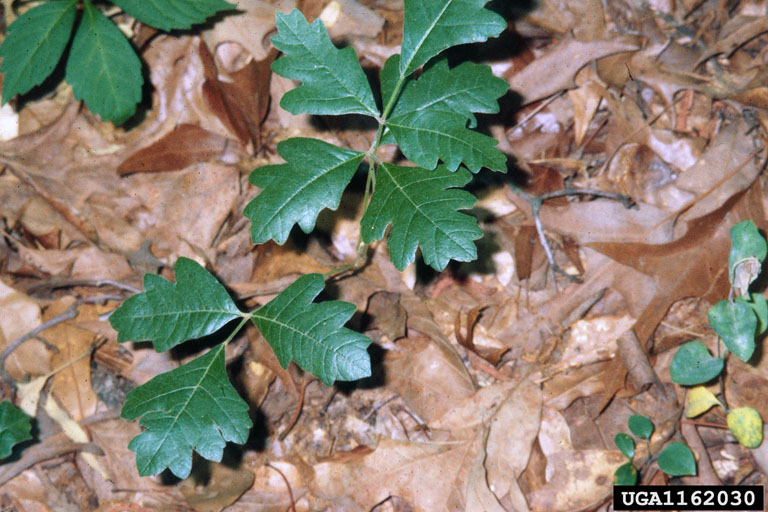
Also known as eastern poison oak and Atlantic poisonous oak, this deciduous shrub is native to central and eastern US where it grows in the dry and sandy areas of forests, natural areas, or thickets. It is a member of the cashew family, Anacardiaceae, that also includes poison ivy, pistachio, and mango, and is not related to oaks. Growing from a rhizomatous root system, the plant can grow up to 10′ tall but is usually 2-4′ tall. It has multiple stems that are covered with short soft hairs and smooth, light brown bark. The alternate leaves resemble those of white oak and are ovate to elliptic, 3-6″ long, trifoliate, and usually are crowded at the end of the stem. The leaflets are hairy, leathery and may be lobed or have toothed margins. They are green until fall when they turn bright reddish-orange. Pendant panicles of 5 petaled yellow-greenish flowers appear in the spring and give way to clusters of small greenish-white, berry-like, one-seeded fruits that turn tannish-white when ripe, and are attractive to birds. All parts of the plant are toxic to humans on contact. The genus name, Toxicodendron, comes from the Greek words, τοξικός (toxikos), meaning poison, and δένδρον (dendron), meaning tree. The specific epithet, quercifolium, comes from the Latin words quercus, meaning oak, and folium, meaning leaf, and refers to the resemblance of the leaves to those of white oak.
Type: Deciduous shrub
Outstanding Feature: Poisonous properties; fall coloration
Form: Erect
Growth Rate: Moderate
Bloom: Panicles of small, yellow greenish flowers in spring
Size: 2-10′ H
Light: Full sun to partial shade
Soil: Lean to average, dry, well-drained
Hardiness: Zones 5-9
Care: Remove plants as they appear wearing protective clothing; do not burn as smoke can be poisonous.
Pests and Diseases: None of significance
Propagation: Seed
Outstanding Selections: None
Photo Credit: Wikipedia